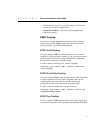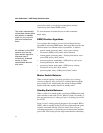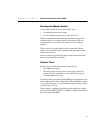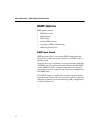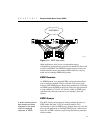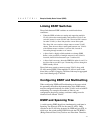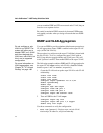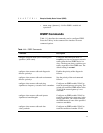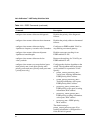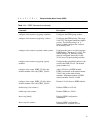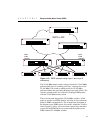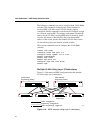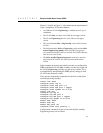
178
Intel
®
NetStructure™ 480T Routing Switch User Guide
you can combine ESRP and STP on a network and a VLAN, but you
must do so on separate devices.
Be careful to maintain ESRP connectivity between ESPR master
and standby switches when you design a network that uses ESRP
and STP.
ESRP and VLAN Aggregation
Do not configure a sub-
VLAN to run ESRP. The
system will allow you to
enable ESRP on a VLAN
and then designate the
VLAN as a sub-VLAN, but
this is not a supported
configuration.
You can use ESRP to provide redundant default router protection to
VLAN aggregation clients. ESRP is enabled on the super-VLAN
only (not the sub-VLANs).
The procedure is to add ports to the super-VLAN that is shared with
the sub-VLANs. To do so, configure the super-VLAN with an
802.1Q tag added as tagged with the sub-VLAN ports. This will
avoid a protocol conflict. Then enable ESRP on the super-VLAN.
For more information on
VLAN aggregation, see
Chapter 12, "IP Unicast
Routing" on page 189.
The following example combines ESRP and VLAN aggregation for
the super-VLAN vsuper and two sub-VLANs, v1sub and v2sub,
that have ports 1 and 2 as members, respectively.
1 Create the VLANs and set up the super-VLAN to sub-VLAN
relationship:
create vlan v1sub
create vlan v2sub
create vlan vsuper
configure vsuper ipaddress 10.1.2.3/24
enable ipforwarding
enable ospf
configure ospf add vsuper
configure v1sub add port 1
configure v2sub add port 2
configure vsuper add subvlan v1sub
configure vsuper add subvlan v2sub
2 Turn on ESRP for the VLAN vsuper:
configure vsuper tag 1234
configure vsuper add port 1,2 tagged
enable esrp vlan vsuper
Use these commands to verify the configuration:
• show vlan {detail}—Displays super- and sub-VLAN
relationships, IP addresses, and port membership.




